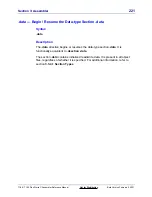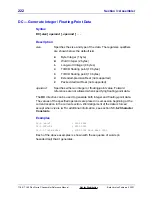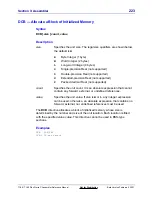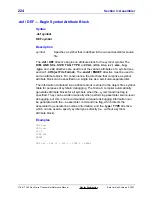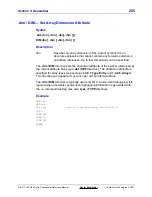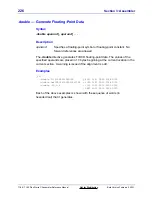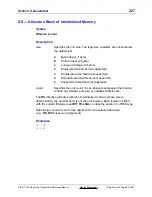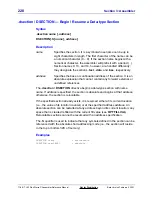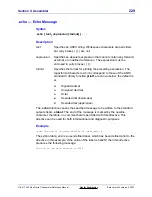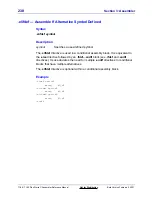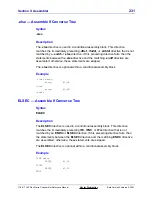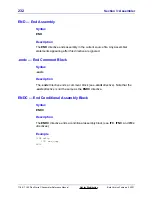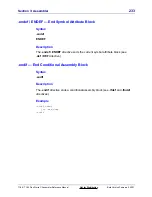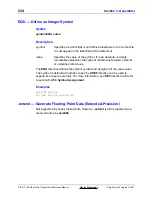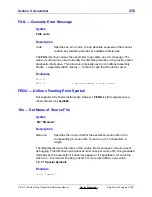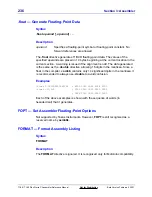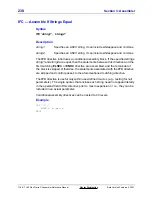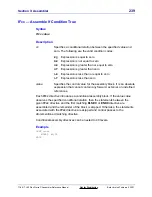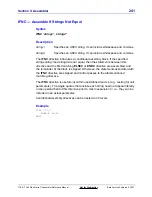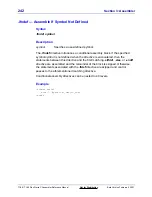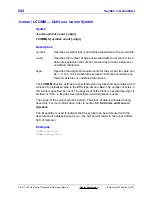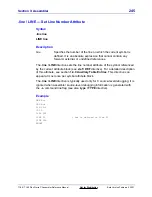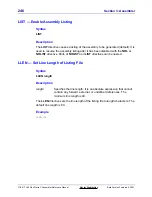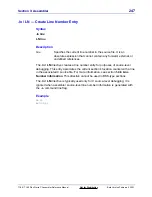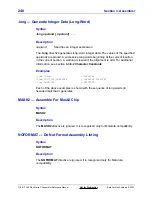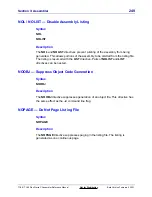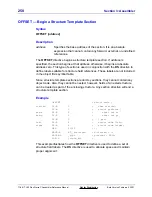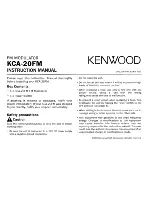
Section 3: Assembler
235
TI
-
89 / TI
-
92 Plus Sierra C Assembler Reference Manual
Not for Distribution
Beta Version February 2, 2001
FAIL — Generate Error Message
Syntax
FAIL
code
Description
code
Specifies an error code. It is an absolute expression that cannot
contain any forward, external, or undefined references.
The FAIL directive causes the assembler to generate an error message. The
value of
code can be used to identify the offending directive or to provide useful
diagnostic information. This directive is typically used in conditional assembly
blocks — especially within macros — to mark a case that should not occur.
Examples
FAIL 83
FAIL \2
; second argument inside a macro
FEQU — Define a Floating-Point Symbol
Not supported by Texas Instruments. However, FEQU is still recognized as a
reserved name by asm68k.
.file — Set Name of Source File
Syntax
.file "
filename"
Description
filename
Specifies the name of either the assembler source file or the
corresponding C source file. It can be up to 14 characters in
length.
The .file directive sets the name of the source file for purposes of source-level
debugging. This directive can appear at most once per source file. It is generated
internally by the assembler if it does not appear or if it specifies a C source file
when the
-L
command line flag is used. For more information, see section
1.4.7.1 Special Symbols.
Example
.file "demo.c"

